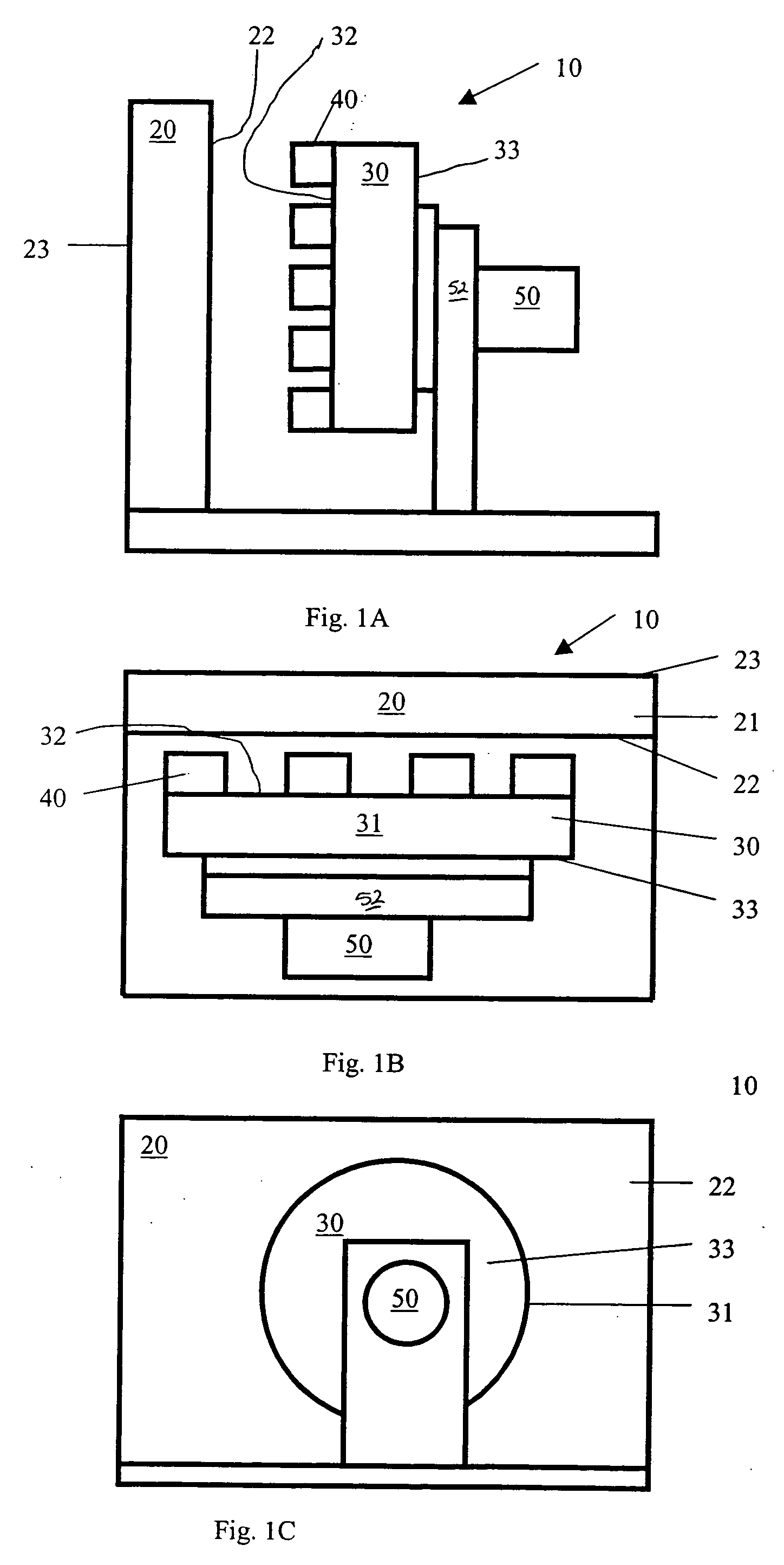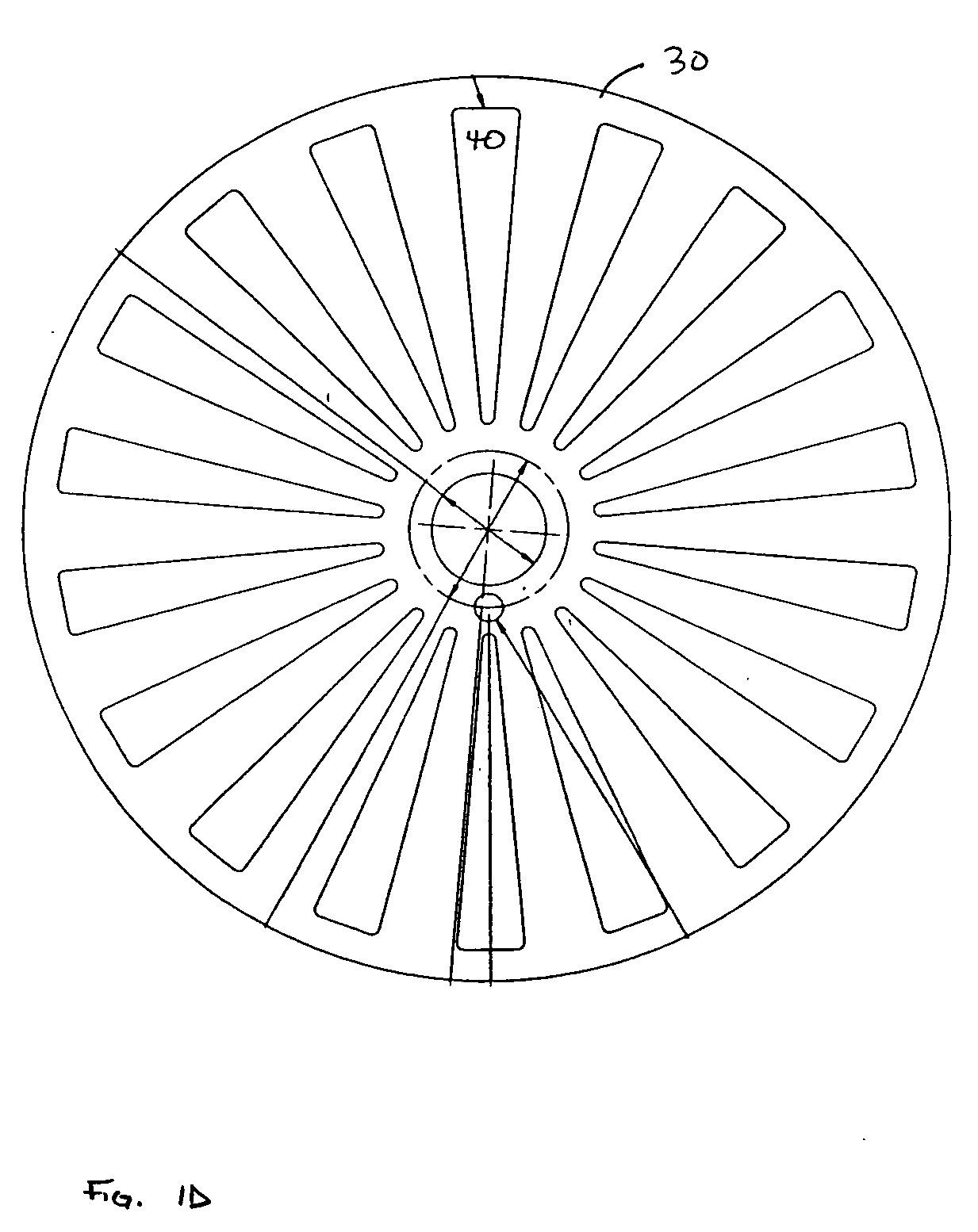Printed circuit board motor
a printed circuit board and motor technology, applied in the field of electric motors, can solve the problems of limited life of batteries and significant part of the cost of such motors, and achieve the effects of accurate control of rotation rate, torque and average current consumption
- Summary
- Abstract
- Description
- Claims
- Application Information
AI Technical Summary
Benefits of technology
Problems solved by technology
Method used
Image
Examples
Embodiment Construction
[0021] FIGS. 1A-D diagrammatically illustrate a printed circuit board motor 10 from several different viewpoints. A rotor 30 of the printed circuit board motor 10 comprises a plate 31 having a front surface 32 and a back surface 33. The rotor 30 has a plurality of magnets 40 mounted on and extended to the outer edge of the front surface 32 of the rotor plate 31 as seen in FIG. 1D. The magnets 40 may also be embedded into the front surface 32 of the rotor plate 31. The plurality of magnets 40 on the rotor 30 alternate their north and south poles. That is, proceeding around the periphery of the rotor 30, one encounters magnets with their north poles facing away from the rotor 30 interleaved with magnets with their south poles facing away from the rotor 30. The rotor plate 31 may be configured as a circular disc but other geometric shapes are possible. The rotor 30 is attached to an axle 50. The axle 50 rotates with the rotor 30, and may be attached to whatever apparatus is to be drive...
PUM
 Login to View More
Login to View More Abstract
Description
Claims
Application Information
 Login to View More
Login to View More - R&D
- Intellectual Property
- Life Sciences
- Materials
- Tech Scout
- Unparalleled Data Quality
- Higher Quality Content
- 60% Fewer Hallucinations
Browse by: Latest US Patents, China's latest patents, Technical Efficacy Thesaurus, Application Domain, Technology Topic, Popular Technical Reports.
© 2025 PatSnap. All rights reserved.Legal|Privacy policy|Modern Slavery Act Transparency Statement|Sitemap|About US| Contact US: help@patsnap.com



